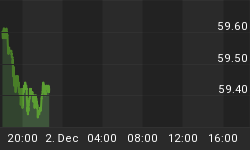7/19/2010 9:16:13 AM
Trade Recommendations:
Take no action.
Daily Trend Indications:

- Positions indicated as Green are Long positions and those indicated as Red are short positions.
- The State of the Market is used to determine how you should trade. A trending market can ignore support and resistance levels and maintain its direction longer than most traders think it will.
- The BIAS is used to determine how aggressive or defensive you should be with a position. If the BIAS is Bullish but the market is in a Trading state, you might enter a short trade to take advantage of a reversal off of resistance. The BIAS tells you to exit that trade on "weaker" signals than you might otherwise trade on as the market is predisposed to move in the direction of BIAS.
- At Risk is generally neutral represented by "-". When it is "Bullish" or "Bearish" it warns of a potential change in the BIAS.
- The Moving Averages are noted as they are important signposts used by the Chartists community in determining the relative health of the markets.
Current ETF positions are:
In Cash.
Daily Trading Action
The major index ETFs opened lower then began a steep dive for the forty-five minutes of trading where the majority of the days losses were seen. The next half hour of trading saw selling pressure ease and the major indexes moved modestly higher before selling began anew at a more gradual pace. At the lows, reached a half hour before the close, three percent losses were seen across the major indexes. The final half hour saw a bounce that didn't fully hold and the major indexes finished between 2.6% to 2.8% lower on the day. The Russell-2000 (IWM 61.07 -2.31) lost -3.6% on the day and the Semiconductor Index (SOX 349.16 11.93) lost -3.3%. The real leaders in the decline were the banks, with the Bank Index (KBE 23.34 -1.45) losing 5.8% and the Regional Bank Index (KRE 23.40 -1.00) losing -4.1%. The 20+ Yr Bonds (TLT 100.80 +0.49) gained a half of one percent as investors clung to fixes income as a safer investment than equities. Volume was average at 1.466B shares traded on the NYSE.
There were four economic reports of interest released:
- CPI (Jun) fell -0.1% as expected
- Core CPI (Jun) rose +0.2% versus an expected +0.1%
- Net Long-Term TIC Flows (May) came in at +$35.4B
- Michigan Consumer Sentiment-Preliminary (Jul) came out at 66.5 versus an expected 74.5
The first two reports were released an hour before the open with the third following a half hour later. Twenty-five minutes into the session, the final report was released which didn't instill confidence as the market was already in panic sell mode.
Headlines were that poor economic reports caused the slide. In fact, the economic reports had little to do with it. The worst miss was clearly the Consumer Sentiment report and the slide was in full sway when it was released.
The real culprits were the banks. Citigroup (C 3.90 -0.26) fell -6.25% and Bank of America (BAC 13.98 -1.41) fell -9.2% as both reported higher than expected profits but with declining revenues and the realized profits were from raking back in reserves set aside for credit losses (i.e. loans were going to go bad). It seems that market participants are starting to doubt that the bank losses will be limited to their reserve levels and with lower revenue expectations, banks are actually collapsing on their top lines. General Electric (GE 14.55 -0.70) lost -4.6% as its GE Capital unit raked in profits but its revenues diminished. Over half of GE looks more like a bank than an industrial conglomerate. Goldman Sachs (GS 146.28 +1.06) was one of the few bright spots as it continues to recover on news of the $550M settlement of civil fraud charges.
All ten economic sectors in the S&P-500 moved lower while implied Volatility moved somewhat modestly higher with the S&P-500 (VIX 26.25 +1.11) implied volatility rising 4.4% and the implied volatility for the NASDAQ-100 (VXN 26.87 +0.30) rising 1.1%.
Commentary:
Friday's trading action saw volumes rise to average with selling dominating the action. We expected some downside action and nimbly side-stepped out of our long positions at the open. The level of selling on a percentage basis was worth noting but given the significant run-up the markets have seen in the last two weeks, it wasn't really as dramatic as it seemed on the surface. Volume only rose to average levels. Still, there is a pattern holding for the last three months of lower highs and lower lows. That has many market participants bearish. We aren't leaning so bearish, but our indicators saw to wait this one out and see where the dust settles. Until then, we will remain in cash.
We hope you have enjoyed this edition of the McMillan portfolio. You may send comments to mark@stockbarometer.com.
















